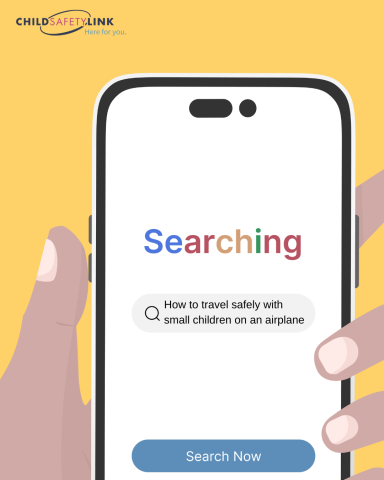Planning your first flight with a baby? We sat down with a Child Passenger Safety Technician (CPST) to talk travel tips, turbulence, and what parents and caregivers need to know before takeoff.
💬 Q: I thought I was allowed to just hold my baby on the plane?
CPST:
You're not wrong, airlines currently do allow children under age 2 to fly on a caregiver’s lap. Just because it's permitted doesn't mean it's the safest choice, think of it this way: during turbulence, everyone else is buckled in for their safety – even the coffee pot is secured. Your child deserves the same protection!
💬 Q: So, what’s the safest way for a baby or toddler to fly?
CPST:
The safest way for a baby or toddler to fly is secured in a car seat, that’s correctly installed on the aircraft seat. Being safely bucked in their own car seat is the only way to protect them during all phases of flight, takeoff, landing, and unexpected bumps along the way. Transport Canada strongly recommends that infants and small children be safely restrained in a car seat during all phases of the flight, even though it’s not yet required by law.
💬 Q: What kind of car seat should I use on the plane?
CPST:
Every Canadian car seat is approved for air travel and will have instructions for how to use it on a plane. Look for the Canadian National Safety Mark (usually on the side or base). All rear-facing infant seats and convertible seats are safe to use on an aircraft – but not every seat will fit on every airplane seat. Check measurements before you fly.
💬 Q: What about older children?
CPST:
Children who have outgrown a car seat should use the airplane’s seat belt. A booster seat can’t be used on an airplane but bringing your booster seat onboard and storing it in the overhead bin ensures that your booster arrives when you do; and doesn’t risk getting damaged, delayed, or lost. A fun tip about backless boosters is that they can fit under the seat in front on many aircrafts and can be used as a footrest for longer flights!
💬 Q: Any travel tips for flying with a car seat?
CPST:
Yes!
- You will need to buy a seat for your child under age 2 to ensure a seat is available for them. Some airlines allow you to book this online, others you may need to call to confirm.
- Book a window seat, car seats can’t block the aisle.
- Consider using a travel bag or rolling cart to carry your car seat through the airport.
- Read your car seat manual to learn how to install your car seat on a plane (usually near the back of the instruction manual). Aircraft belts are different!
- To confirm airplane seat dimensions and specific car seat policies in advance, check your airline’s website or call their help line.
- Take advantage of early boarding, many airlines offer this to families with young kids.
- Boosters carried onboard are typically free and do not count towards your baggage limits, though you should always verify these details with the airline, especially for international travel.
💬 Q: Where can I learn more before we fly?
CPST:
Check out:
- Transport Canada – Flying with Children
- CPSAC – Recommendations for Car Seats on Aircraft for Children Under Two
- Parachute – Other ways to travel
- Traveling with children | Air Canada
- Children and family | WestJet official site
- Travelling with children and infants. Learn more | Porter Airlines
- Flair Airlines – Flying with Children?
- Travelling with Children and Other Flight Guidelines | Air Transat
Remember, a safe seat isn’t just for the car. Happy and safe travels!
Still have questions? We’re here to help. Reach out to Child Safety Link at 1-866-288-1388 (toll-free in Atlantic Canada), 902-470-7036, or email childsafetylink@iwk.nshealth.ca.
